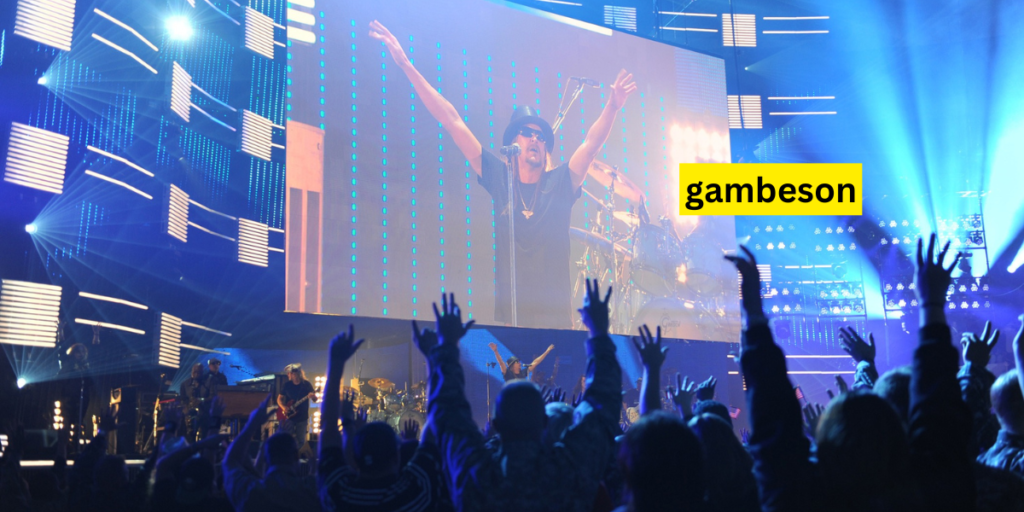Step into the captivating world of medieval armor, where chivalry meets craftsmanship and history intertwines with legend. At the heart of this storied era lies an unsung hero—the gambeson. Often overshadowed by glimmering plate mail and fearsome chainmail, the gambeson is a quilted masterpiece that provided both comfort and crucial protection to knights on the battlefield. But what exactly is a gambeson, and why was it deemed essential in an age defined by warfare? Join us as we unravel the layers of this remarkable garment, exploring its construction, evolution, and pivotal role in shaping medieval combat. Prepare to be transported back in time as we delve into the art of armor—where each stitch tells a story!
Introduction to the Gambeson
Step into the world of medieval warfare, where knights donned heavy armor and faced fierce battles. Among their essential gear was a remarkable garment known as the gambeson. This quilted piece may appear simple at first glance, but its significance in protecting warriors cannot be overstated. As we delve deeper into the history and evolution of the gambeson, you’ll uncover why it remains an iconic symbol of medieval combat attire. Whether you’re a history buff or just curious about these fascinating pieces of clothing, join us on this journey to explore everything from its origins to modern-day relevance.
- Definition and history of the garment
The gambeson is a quilted garment that dates back to the Middle Ages. Initially crafted as a simple padded coat, it was designed to provide protection under armor. Knights and soldiers wore it beneath their metal gear for added comfort.
Historically, the gambeson served various purposes beyond protection. It acted as insulation against cold weather and helped absorb shock from blows in battle. This versatile piece of clothing became essential on the battlefield.
As time progressed, the design evolved significantly. The early versions were often made from linen or wool filled with natural fibers like straw or horsehair. By the late medieval period, more sophisticated techniques emerged, resulting in well-fitted garments that offered greater mobility while still ensuring safety.
Today, this iconic piece continues to capture interest due to its rich history and practical applications throughout different eras of warfare.
Purpose and Importance of the Gambeson in Medieval Armor
The gambeson served a vital role in medieval armor as both protection and comfort. Its padded design absorbed the impact of blows from swords, arrows, and other weapons. This made it invaluable for knights and soldiers on the battlefield.
Worn underneath heavier armor, the gambeson prevented chafing and discomfort caused by metal plates. It allowed warriors to move freely while providing an essential barrier against injury.
Beyond physical protection, it also contributed to a soldier’s morale. A well-fitted gambeson instilled confidence during combat, knowing that they were safeguarded against potential harm.
In addition to its practical uses, the gambeson’s layered fabric offered insulation in colder climates. Knights could engage fearlessly in battle without being hindered by extreme weather conditions or cumbersome gear.
- Protection and comfort for knights and soldiers
The gambeson served as a vital layer of protection for knights and soldiers during battle. Its quilted design absorbed the impact from weapons, reducing injuries significantly. Whether facing arrows, swords, or blunt force, this garment was indispensable.
Comfort played a crucial role in its effectiveness. Made from layers of fabric stuffed with materials like wool or flax, the gambeson provided warmth while allowing mobility. This balance ensured that warriors could move freely without sacrificing safety.
Additionally, the snug fit helped to stabilize armor worn over it. A well-fitted gambeson prevented chafing and discomfort during long campaigns or battles. Soldiers could focus on their training and tactics rather than being distracted by ill-fitting gear.
In an era where every advantage mattered on the battlefield, comfort combined with protection made the gambeson essential for survival and success in combat scenarios across medieval Europe.
Evolution of the Gambeson
The gambeson has undergone significant transformation since its inception. Initially, it served as a simple padded garment designed to protect against blunt force and friction from armor.
As warfare evolved, so did the design of the gambeson. Craftsmen began incorporating multiple layers of fabric and various stuffing materials for enhanced protection. This advancement allowed knights to better absorb impact during combat.
By the late medieval period, gambesons featured tailored cuts that improved mobility without sacrificing defense. Some even included integrated sleeves or hoods for added coverage.
Materials also shifted over time; wool became popular due to its insulating properties while linen offered breathability in warmer climates.
These changes reflected not just practical needs but also advancements in textile technology, making the gambeson an essential component of a knight’s ensemble throughout history.
- From simple padding to advanced designs
The gambeson has undergone significant transformation since its inception. Initially, it was a basic padded garment made from layers of linen or wool. This simple design provided essential protection against cuts and impacts in battle.
As the need for more effective armor grew, so did the complexity of gambesons. Artisans began to incorporate additional materials like silk and leather, enhancing both durability and comfort. Some designs featured intricate stitching patterns that not only added strength but also gave them an aesthetically pleasing look.
By the late medieval period, gambesons evolved into tailored pieces with adjustable lacing systems. These advancements allowed for a better fit and greater mobility during combat. The various styles reflected regional influences as culture spread across Europe, making each piece unique to its wearer.
Today’s modern reproductions pay homage to these historical developments while ensuring functionality remains at their core.
Types of Gambesons
Gambesons come in various styles, each tailored to specific needs. The most common type is the padded gambeson, designed primarily for protection. It features thick layers of fabric filled with materials like wool or linen. This padding absorbs impact and provides comfort during combat.
There are also short and long gambesons. Short versions typically extend just below the waist, allowing greater mobility. Long gambesons reach down to the thighs or knees, offering enhanced coverage against enemy strikes.
Some variations incorporate sleeves for added upper arm protection while others may have a collar that helps shield the neck area from blows.
Materials play a crucial role as well; cotton brings breathability while wool offers warmth in colder climates. Each design variation serves its purpose while maintaining essential protective qualities vital for medieval warriors on the battlefield.
- Different materials used and variations in design
Gambesons were crafted using various materials, each chosen for its unique properties and availability. Traditionally, cotton or linen served as the base fabric. These natural fibers provided breathability while ensuring comfort during long battles.
As time progressed, artisans began to experiment with different layers. Wool became popular due to its insulating qualities and durability. It could keep a wearer warm in cold weather yet remained light enough for mobility.
Design variations also emerged over centuries. Some gambesons featured simple straight cuts, allowing ease of movement, while others sported intricate stitching patterns that added both style and strength.
The length of the gambeson varied too; some extended down to mid-thigh or knee level for greater protection. Sleeves could be short or long depending on personal preference and combat requirements. Each design catered to specific needs of knights and soldiers on the battlefield.
Examples of Gambesons in Use
Throughout medieval history, gambesons were a common sight on the battlefield. Knights often wore them under their armor for added protection and comfort.
Famous figures like Richard the Lionheart donned these padded garments while leading troops during the Crusades. His gambeson likely featured intricate designs that showcased both functionality and status.
In literature and film, characters such as King Arthur are frequently depicted wearing gambesons, blending historical accuracy with dramatic flair. These portrayals inspire modern interpretations in reenactments and cosplay events.
Artifacts from museums reveal variations of gambesons crafted in vibrant colors or adorned with unique patterns to highlight social standing among warriors.
Each example illustrates how versatile this garment was—not only serving its primary purpose but also reflecting an individual’s identity within a tumultuous period of history.
- Images or descriptions of famous knights wearing gambesons
Throughout history, several notable knights donned gambesons as essential armor beneath their more formidable gear. One striking example is Sir Geoffrey de Charny, a 14th-century French knight renowned for his valor in battle. He wore a beautifully crafted gambeson made from layers of linen and wool, providing both protection and comfort during the heat of combat.
Another iconic figure is the famed English warrior William Marshal. His gambeson featured intricate embroidery and was tailored to fit snugly under his plate armor, allowing him flexibility while maintaining adequate defense against blows.
In artworks depicting these heroes, you can often spot the distinct quilted pattern of their gambesons peeking out from underneath metal plates. Their choice of this versatile garment reflects both practicality and style in medieval warfare. The rich colors and textures of these historical garments tell stories of craftsmanship that have continued to inspire modern recreations today.
How to Make a Gambeson
Creating a gambeson can be an exciting DIY project. Start by selecting your fabric; cotton or linen works well for breathability and comfort.
Next, measure your body to ensure a proper fit. You’ll need measurements for the chest, waist, and length of the torso.
Once you have your materials ready, cut out the pieces according to your pattern. Traditional gambesons feature quilted sections that add padding without bulk.
Sew layers together using strong thread. Don’t forget to include armholes and a neckline that allows mobility.
Lastly, consider adding laces or straps for closure. This will help keep everything secure during wear.
For those who prefer guidance, numerous online resources offer free patterns and detailed tutorials tailored to all skill levels. Dive into this historical crafting experience!
- Step-by-step guide or resources for DIY enthusiasts
Creating your own gambeson can be a rewarding project. Start by gathering materials like thick cotton or wool fabric for the outer layer and softer padding, such as quilt batting, for comfort.
Measure your body accurately to ensure a good fit. Sketch out a simple pattern that includes sleeves and an adjustable front closure. It’s essential to allow room for movement.
Begin cutting the fabric according to your pattern. Assemble the layers by sewing them together with strong thread; double-stitch seams for added durability.
Add features like reinforced stitching in high-wear areas and eyelets or laces at the front. This not only enhances functionality but also adds character to your piece.
For inspiration, search online forums dedicated to historical reenactment or DIY medieval clothing projects. You’ll find plenty of resources that include patterns, instructional videos, and tips from fellow enthusiasts eager to share their experiences.
Modern Day Uses for a Gambeson
Today, the gambeson has found a new life beyond medieval battlefields. It is now embraced by historical reenactors who strive for authenticity in their portrayals of knights and soldiers. Wearing a gambeson enhances the immersive experience during events, allowing participants to feel connected to history.
Cosplay enthusiasts also appreciate this versatile garment. With its rich textures and layered designs, it adds depth to any character from fantasy or historical narratives. Many cosplayers customize their gambesons with unique colors and patterns that reflect personal style.
Additionally, some modern fashion trends borrow elements from the gambeson’s design. Fashion designers explore quilted fabrics for contemporary clothing lines, tapping into the comfort and aesthetic appeal of this historic garment.
The gambeson’s adaptability ensures it remains relevant in various contexts today, showcasing its enduring legacy across different cultures and interests.
- Reenactments, cosplay, historical fashion trends
Gambesons have found a vibrant place in modern reenactments. Enthusiasts don these padded garments to accurately portray medieval knights and soldiers, adding authenticity to battle scenes. The craftsmanship involved often mirrors historical techniques, making each piece unique.
Cosplayers also embrace the gambeson for its aesthetic appeal and practicality. With intricate designs and various fabrics, it allows fans of fantasy genres to create impressive looks that stand out at conventions. Many opt for bold colors or embellishments that reflect their favorite characters while retaining the traditional silhouette.
In recent years, historical fashion trends have seen a resurgence of interest in gambesons. Designers draw inspiration from this iconic garment, incorporating quilted elements into contemporary clothing lines. This blend of history and modernity captivates those who appreciate timeless style while celebrating heritage through fashion choices.
Conclusion: Why the Gambeson is an Essential Piece of Medieval Armor
The gambeson stands out as a crucial element of medieval armor. This quilted garment provided essential protection while ensuring comfort for knights and soldiers alike. Its historical significance cannot be overstated, as it evolved over time to meet the demands of warfare.
Crafted from various materials, gambesons not only served practical purposes but also reflected the craftsmanship of their era. Examples seen on famous knights highlight its role in both function and fashion during battles.
For those interested in history or crafting, making a gambeson can be a rewarding project that connects one with the past. Today, this versatile piece is embraced by reenactors and cosplayers who appreciate its authenticity.
Understanding the importance of the gambeson allows us to appreciate how these layered garments shaped medieval combat strategies and personal safety on the battlefield. It remains an enduring symbol of resilience and ingenuity throughout history.






